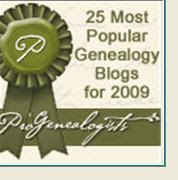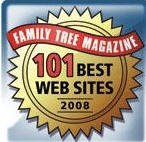 The Wisconsin Historical Society has posted interviews with Holocaust survivors who settled in that state.
The Wisconsin Historical Society has posted interviews with Holocaust survivors who settled in that state.Of some 140,000 survivors who came to the US, more than 1,000 settled in Wisconsin.
The collection includes 156 hours of audio and 3,400 transcribed pages. Each interview is on a testimony page with a biography, summary of the interview, audio players for each tape side and download options for the audio, transcript and photographs. Each interview has been transcribed (available as a PDF). Each tape side produced some 10 transcript pages; full transcripts run from 30-190 pages.Six million European Jews were systematically murdered by the Nazis and their allies during the 1930s and 1940s. As Nazi tyranny spread, millions of other people were also killed by the Third Reich.
Wisconsin Historical Society archivists interviewed 22 Holocaust survivors and two American witnesses between 1974 and 1981. These oral histories are now available digitally and in their entirety for the first time, uncensored and unfiltered.
As is the case in such projects, transcripts show gaps due to recording conditions and linguistic complexity, along with background noise, strong accents and lapses into native languages.
More than 15 different languages appear on the audiotapes. Footnotes and editorial insertions help identify place names, and translate German, Polish, Yiddish and other foreign expressions.
Each cassette tape was converted to mp3 digital format. Stream or download any tape side from the links in the Audio and Transcript Information section. Most mp3 files are about 15 MB (25 minutes). With a broadband connection, they will download in about 30 seconds at 64 kps.
Survivors donated more than 200 photographs available for viewing; most are post-war.
In these interviews, men and women recall Berlin during the rise of the Third Reich, Kristallnacht and other anti-Semitic violence, the Warsaw and Lodz ghettoes, and conditions at Auschwitz, Dachau, Bergen-Belsen, and other less-famous concentration camps.
They describe the fates of their families, starting life over again in postwar Europe, and emigrating to the U.S. and Israel. They also discuss being new American immigrants and life in Wisconsin's Jewish communities between 1945 and 1980.
The survivors lived across Europe: Poland, Greece, the Netherlands, Ukraine. Their families were middle-class, wealthy and working class; some were devoutly observant while others were secular. The youngest person interviewed was a toddler during this period, the oldest was in his 30s, while most were teens.
One American witness was a US Army captain who liberated concentration camps; the other was a United Nations administrator who helped resettle survivors.
Choose from 24 full testimonies or listen to brief excerpts.
Among the interviews:
-- A teenager's Gentile friends turn against him- Fred Platner
-- A rabbi recalls Kristallnacht in Berlin- Rabbi Manfred Swarsensky
-- Rescued from death's door at Bergen-Belsen- Magda Herzberger
-- A survivor's kindergartener comes home in tears- Cyla Stundel
There are activities and lesson plans for teachers and readers may learn more about the project.
There is an excellent caveat for teachers who may plan to use this material.
We have not censored or suppressed any survivor's recollections. Many interviews contain passages with vivid eyewitness descriptions of horrifying cruelty, which may not be suitable for younger readers and listeners.This digital collection was created through the generous support of the Helen Bader Foundation of Milwaukee and private donors.
Teachers and parents should understand that recollections of life in ghettoes and concentration camps could shock and frighten children who have never before imagined such brutality.
Hearing these anecdotes through the actual voice of the person who survived them can be very distressing, especially when the speaker becomes audibly upset.
If an oral history contains highly sensitive passages, we have noted it in the interview summary. It's possible that oral histories without a notice contain distressing information for some listeners.
Educators of older students may find interviews with sensitive content to be particularly effective teaching tools. Most speakers were teenagers when they lived through these terrible events. Teachers of younger students should personally review audio and transcript passages before introducing them to children.
Thanks to Sally Jacobs, the Practical Archivist, for the tip to this resource. At her day job, she helped to create this free online digital collection.





































No comments:
Post a Comment